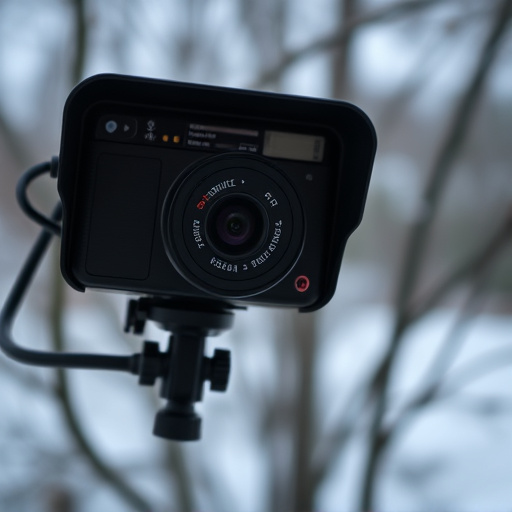Miniature surveillance devices disguised as everyday home items pose significant privacy risks, capturing footage without consent. While legal protections vary by region, staying informed about local laws is crucial. To safeguard your privacy, conduct regular inspections with advanced technology and update wiring to hinder hidden camera operation. Taking these precautions helps protect personal spaces from unauthorized monitoring, ensuring a greater sense of security in the digital age.
“In an era where technology shrinks devices, miniature surveillance equipment has emerged as a subtle yet pervasive threat to personal privacy. These tiny cameras, seamlessly integrated into everyday home objects, raise significant concerns about data security and ethical boundaries. This article delves into the world of hidden cameras, exploring their capabilities, the legal landscape surrounding them, and most importantly, providing practical strategies for safeguarding your privacy from these covert recorders.”
- Understanding Miniature Surveillance Devices: Unveiling the Hidden Cameras in Everyday Objects
- The Rise of Hidden Cameras: Exploring Privacy Concerns and Legal Implications
- Safeguarding Your Privacy: Strategies to Detect, Prevent, and Mitigate Miniature Surveillance Devices
Understanding Miniature Surveillance Devices: Unveiling the Hidden Cameras in Everyday Objects
Miniature surveillance devices, often disguised as everyday objects, have become increasingly sophisticated and accessible. These hidden cameras, sometimes referred to as spy cameras or tiny CCTV systems, can be found integrated into various items we use daily, ranging from smart home devices to common household appliances. They are designed to capture footage undetected, raising significant concerns about privacy.
Understanding the prevalence and potential risks of these miniature surveillance devices is crucial for protecting one’s privacy. From security cameras hidden in artificial plants to voice-activated assistants with covert recording capabilities, folks need to be vigilant and informed. Taking precautions like verifying the integrity of products, regularly updating software, and using encryption can help safeguard personal spaces from prying eyes and ensure that home objects do not become tools for unauthorized monitoring.
The Rise of Hidden Cameras: Exploring Privacy Concerns and Legal Implications
The proliferation of miniature surveillance devices has led to a surge in hidden cameras embedded in everyday home objects, raising significant privacy concerns. These tiny cameras, often disguised as everyday items like lightbulbs, smoke detectors, or even toys, can capture and transmit video footage undetected. As technology advances, the quality of these recordings improves, making it easier for individuals to invade others’ privacy without their knowledge.
The legal implications surrounding hidden cameras are complex. In many jurisdictions, there are strict laws protecting individuals’ right to privacy in their homes. Installing a hidden camera without consent can lead to severe legal consequences, including civil lawsuits and criminal charges. However, the evolving nature of technology and the potential for legitimate use in safety or security measures make it challenging to regulate this burgeoning market effectively. Thus, while efforts are underway to protect privacy from hidden cameras, staying informed about local laws and maintaining open lines of communication remain crucial for both manufacturers and consumers alike.
Safeguarding Your Privacy: Strategies to Detect, Prevent, and Mitigate Miniature Surveillance Devices
Protecting your privacy in today’s digital age has become a growing concern, especially with the emergence of miniature surveillance devices hidden within everyday home objects. These tiny cameras, often undetectable to the naked eye, raise serious concerns about personal space and confidentiality. To safeguard your privacy from these covert intruders, it is imperative to employ strategic measures that can both detect their presence and prevent their utilization.
One effective approach involves regular thorough inspections of your home, paying close attention to any unusual or recently acquired objects. This includes checking commonly used items like clocks, smoke detectors, and even electrical outlets, as they could be potential hiding places. Additionally, utilizing advanced technology such as thermal imaging cameras and specialized detection software can aid in identifying hidden cameras by revealing heat signatures or anomalies not visible to the human eye. Furthermore, keeping your home’s wiring and infrastructure up-to-date with security-conscious modifications can make it more challenging for these devices to operate unnoticed.
Miniature surveillance devices hidden within everyday objects pose significant privacy risks. As these cameras become more sophisticated and widely available, it’s crucial for individuals to be vigilant and proactive in protecting their personal spaces. By understanding the legal implications, implementing detection strategies, and adopting preventative measures, we can safeguard our privacy from these hidden threats. It’s a constant evolving battle between technological advancements and individual rights, but with awareness and collective effort, we can maintain a sense of security in an increasingly connected world.
